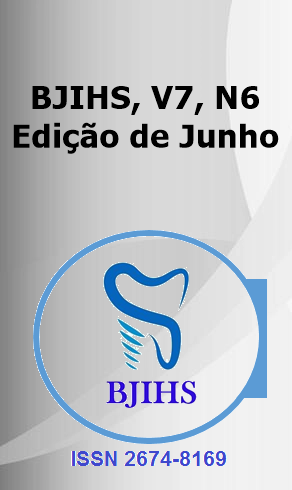Abstract
In recent decades, oncological treatment has evolved significantly, driven by the development of chemotherapeutic agents, targeted therapies, and immunotherapies that have increased survival rates and improved the prognosis of various types of cancer. However, these therapies are often associated with the occurrence of serious adverse effects, among which cardiotoxicity stands out as one of the most significant.
Cardiotoxicity induced by oncologic drugs can manifest in several ways, including left ventricular dysfunction, heart failure, arrhythmias, hypertension, and ischemic events. Among the drugs with the highest cardiotoxic potential are anthracyclines, such as doxorubicin, tyrosine kinase inhibitors, such as trastuzumab, and more recent immunotherapeutic agents. These adverse effects may occur acutely, subacutely, or in a delayed manner, requiring continuous surveillance throughout the treatment.
Clinical studies and systematic reviews have shown that the presence of cardiotoxicity compromises the continuity of oncological therapy and is associated with poorer outcomes in terms of survival and quality of life. In this context, prior cardiological assessment, continuous cardiac function monitoring, and early intervention are essential strategies to minimize risks.
One of the most important advances in managing cardiotoxicity is the establishment of cardio-oncology as a multidisciplinary field. The collaboration between oncologists, cardiologists, specialized nurses, and clinical pharmacists has been fundamental to ensuring a balance between therapeutic efficacy and cardiovascular safety. This integrated approach allows for personalized treatment, dose adjustments, early introduction of cardioprotective agents, and the selection of alternative therapeutic regimens when necessary.
Furthermore, the use of advanced cardiac imaging tools, such as strain echocardiography and cardiac magnetic resonance imaging, has proven effective in the early detection of subclinical changes in myocardial function. Biomarkers such as troponins and BNP have also been used as aids in the early diagnosis of cardiac toxicity.
Another relevant aspect is the need for long-term follow-up of patients after the end of oncological treatment, considering that the late effects of cardiotoxicity may manifest years after exposure to the harmful agent. Long-term follow-up programs are essential, especially for childhood cancer survivors or patients with multiple cardiovascular risk factors.
In summary, cardiotoxicity associated with the use of oncologic medications represents a growing clinical challenge that requires a proactive and multidisciplinary approach. The incorporation of advanced diagnostic technologies, the development of preventive strategies, and specialized teamwork are fundamental pillars for ensuring the efficacy of cancer treatment with the lowest possible toxicity, promoting better quality of life and increased survival for patients.
References
Beavers, C. J. et al. Cardio-Oncology Drug Interactions: A Scientific Statement From the American Heart Association. Circulation, v. 145, p. e811–e838, 2022.
Camilli, M. et al. Anthracycline Cardiotoxicity in Adult Cancer Patients. JACC: CardioOncology, v. 6, n. 5, p. 655-677, 2024.
Haj-Yehia, E. et al. Prevention of cancer-therapy related cardiac dysfunction. Current Heart Failure Reports, v. 22, p. 9, 2025.
Mir, A. et al. Efficacy and safety of cardioprotective drugs in chemotherapy-induced cardiotoxicity: an updated systematic review & network meta-analysis. Cardio-Oncology, v. 9, p. 10, 2023.
Rachma, B.; Savitri, M.; Sutanto, H. Cardiotoxicity in platinum-based chemotherapy: Mechanisms, manifestations, and management. Cancer Pathogenesis and Therapy, v. 3, p. 101-108, 2025.
Raisi-Estabragh, Z. et al. Cardiovascular Considerations Before Cancer Therapy. JACC: CardioOncology, v. 6, n. 5, p. 631-654, 2024.
Tetterton-Kellner, J.; Jensen, B. C.; Nguyen, J. Navigating cancer therapy induced cardiotoxicity: From pathophysiology to treatment innovations. Advanced Drug Delivery Reviews, v. 211, p. 115361, 2024.

This work is licensed under a Creative Commons Attribution 4.0 International License.
Copyright (c) 2025 Pedro Henrique Fabris, Silvio Oscar Noguera Servin, Isabela Luana Reis Nunes, Éllen Cristhyne de Souza Jacobsen, Frederico Mendes Silva Pereira
